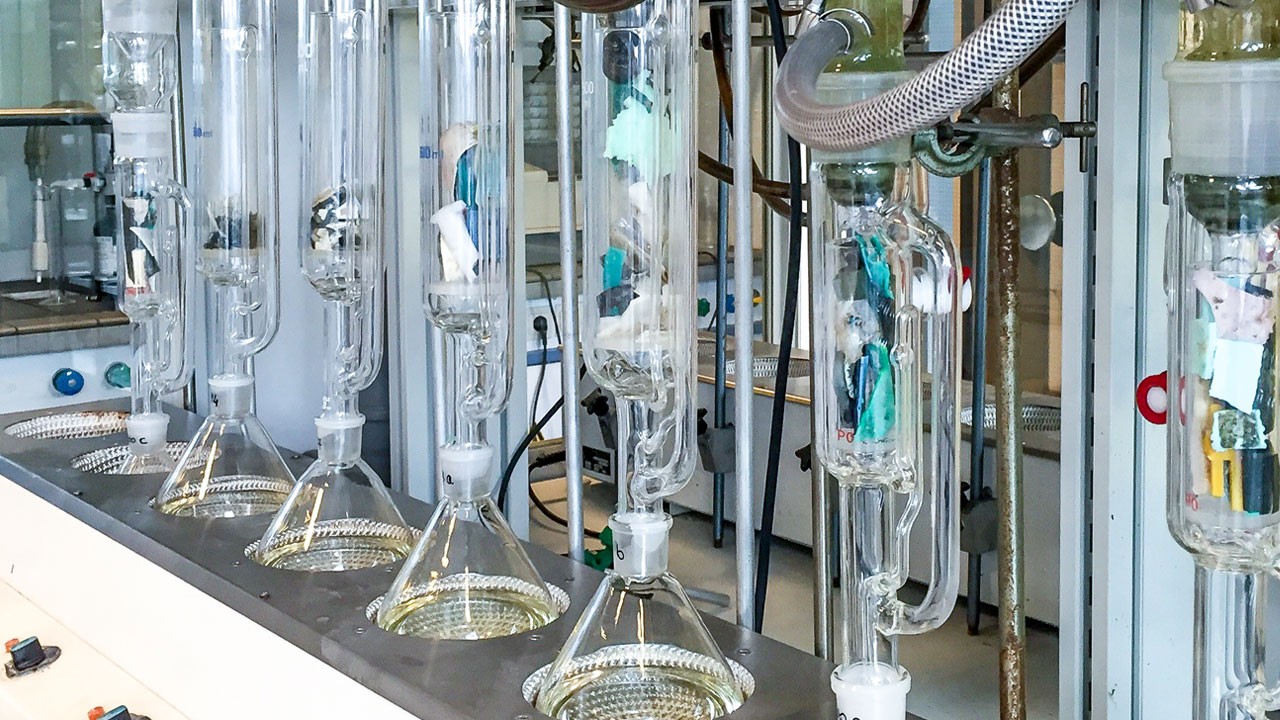The Great Pacific Garbage Patch (GPGP), a massive accumulation of plastic debris in the North Pacific Ocean, poses a significant threat to marine life and the overall health of our oceans. Understanding the composition, toxicity, and origin of this plastic is crucial for developing effective cleanup strategies. This article explores the scientific efforts to analyze the GPGP, focusing on its chemical composition and the data-driven approaches used to characterize this environmental challenge.
One of the primary concerns regarding ocean plastics is the presence of harmful Persistent, Bioaccumulative, and Toxic (PBT) chemicals. Researchers at The Ocean Cleanup conducted tests on plastic samples collected from the GPGP to determine the levels of these chemicals. The results revealed the presence of various PBT chemicals, raising concerns about the potential impact on animals that feed in the area.
Chromatography, a process used to identify the chemical components of a substance, was employed to analyze the plastic samples. The tests indicated that a significant portion, around 84%, of the plastics in the GPGP contained at least one type of PBT chemical. This finding highlights the pervasive nature of toxic chemicals within the GPGP and underscores the potential harm to marine ecosystems.
To gain a comprehensive understanding of the GPGP, researchers have utilized numerous computational and mathematical methods. These data science techniques enable the visualization and characterization of various features of the garbage patch and the plastic debris within it.
When manta trawl samples were collected, detailed data was recorded, including the date, duration, and coordinates of each tow. This information allowed researchers to pinpoint the exact location where the plastic was retrieved.
The location and duration of each tow were verified using GPS trackers installed on the participating vessels. By combining this information with the net’s characteristics, researchers were able to estimate the total surface area surveyed.
An aerial expedition was conducted using a C-130 Hercules aircraft equipped with three types of sensors: Lidar, SWIR imager, and an RGB camera. The Lidar sensor provided detailed 3D mapping, the SWIR imager detected ocean plastic using infrared technology, and the RGB camera captured high-resolution images.
The data collected during the aerial expedition was processed to create multispectral and geo-referenced imagery. Trained observers and a machine-learning algorithm analyzed this imagery to identify and map the spatial distribution of larger debris (greater than 0.5 meters). This information provided a valuable overview of the GPGP’s composition and extent.
To estimate the mass of plastic debris in the GPGP, researchers compared the top-view surface area of objects identified in the aerial imagery with the dry mass of similar objects collected during the first expedition at sea, including ghost nets.
This analysis allowed them to establish a correlation factor between surface area and mass, enabling them to estimate the total mass of plastic in the GPGP.
The data and imagery collected from these various initiatives were integrated into comprehensive computer models. These models provided visual representations of the studies and tests performed during the expeditions, facilitating a deeper understanding of the GPGP’s dynamics.
These models have also been instrumental in refining the design of cleanup systems, such as the one deployed by The Ocean Cleanup in mid-2018. Furthermore, modeling techniques are used to identify the pathways that transport plastic to the gyres, helping to pinpoint the sources of pollution.
In 2022, researchers published a study based on over 6000 plastic objects (larger than 5 cm) captured in the GPGP. By comparing field observations with “virtual particle” modeling results, they were able to identify the most probable sources of GPGP plastic.
The study revealed that over 75% of the plastics in the GPGP are attributable to offshore fishing activities, including fishing nets. This finding underscores the significant contribution of the fishing industry to plastic pollution in the ocean.
Understanding the Great Pacific Garbage Patch requires a multidisciplinary approach, combining chemical analysis, data science, and computational modeling. By continuing to study the composition, toxicity, and sources of plastic pollution, we can develop more effective strategies for cleaning up our oceans and preventing further damage to marine ecosystems.
